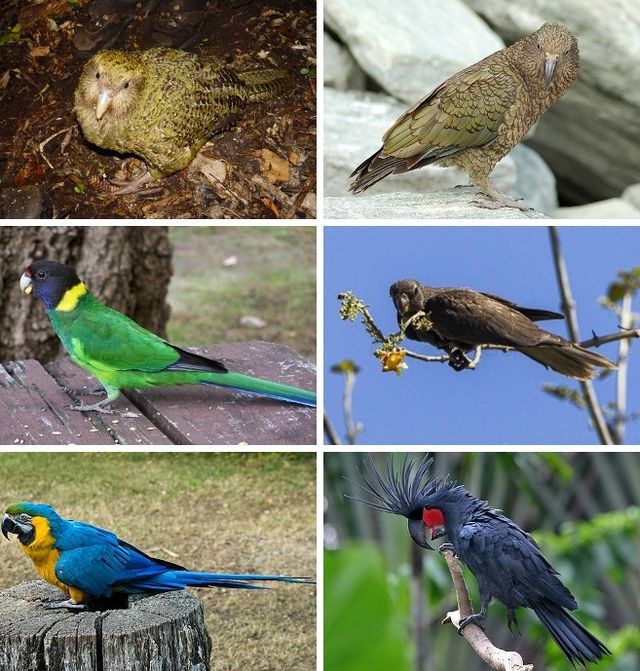Parrot: Difference between revisions - Wikipedia
 Article Images
Article Images
Content deleted Content added
Line 189: Parrots have strong [[zygodactyl]] feet with sharp, elongated claws, which are used for climbing and swinging. Most species are capable of using their feet to manipulate food and other objects with a high degree of dexterity, in a similar manner to a human using their hands. A study conducted with Australian parrots has demonstrated that they exhibit "[[handedness]]", a distinct preference with regards to the foot used to pick up food, with adult parrots being almost exclusively "left-footed" or "right-footed", and with the prevalence of each preference within the population varying by species.<ref name=brennand>{{cite news |last=Brennand |first=Emma |title=Parrots prefer 'left handedness' |url=http://news.bbc.co.uk/earth/hi/earth_news/newsid_9382000/9382181.stm |publisher=[[BBC News|BBC Earth News]] |accessdate=5 February 2011|date=2011-02-02}}</ref> Cockatoo species have a mobile [[Crest (feathers)|crest]] of feathers on the top of their heads, which they can raise for display, and retract.{{sfn|Cameron|2007|loc=[https://books.google.com/books?id=u9qSHzxWdy0C&pg=PA57 p. 57]}} No other parrots can do so, but the Pacific lorikeets in the genera ''[[Vini]]'' and ''[[Phigys]]'' can ruffle the feathers of the crown and nape, and the [[red-fan parrot]] (or hawk-headed parrot) has a prominent feather [[neck frill]] that it can raise and lower at will. The predominant colour of [[plumage]] in parrots is green, though most species have some red or another colour in small quantities. Cockatoos are the main exception to this, having lost the green and blue plumage colours in their evolutionary history; they are now predominately black or white with some red, pink, or yellow.{{sfn|Cameron|2007|loc=[https://books.google.com/books?id=u9qSHzxWdy0C&pg=PA1 p. 1]}} Strong [[sexual dimorphism]] in plumage is not typical among parrots, with some notable exceptions, the most striking being the [[eclectus parrot]].<ref name=Forshaw78 />{{rp|202–207}} However it has been shown that some parrot species exhibit sexually dimorphic plumage in the ultraviolet spectrum, normally invisible to humans.<ref>http://www.bioone.org/doi/abs/10.1647/1082-6742%282006%2920%5B8%3ASDITBA%5D2.0.CO%3B2?journalCode=avms</ref><ref>http://digital.bl.fcen.uba.ar/gsdl-282/cgi-bin/library.cgi?a=d&c=publicaciones/hornero&d=008_ElHornero_v024_n01_articulo047</ref> == Distribution and habitat == | |||